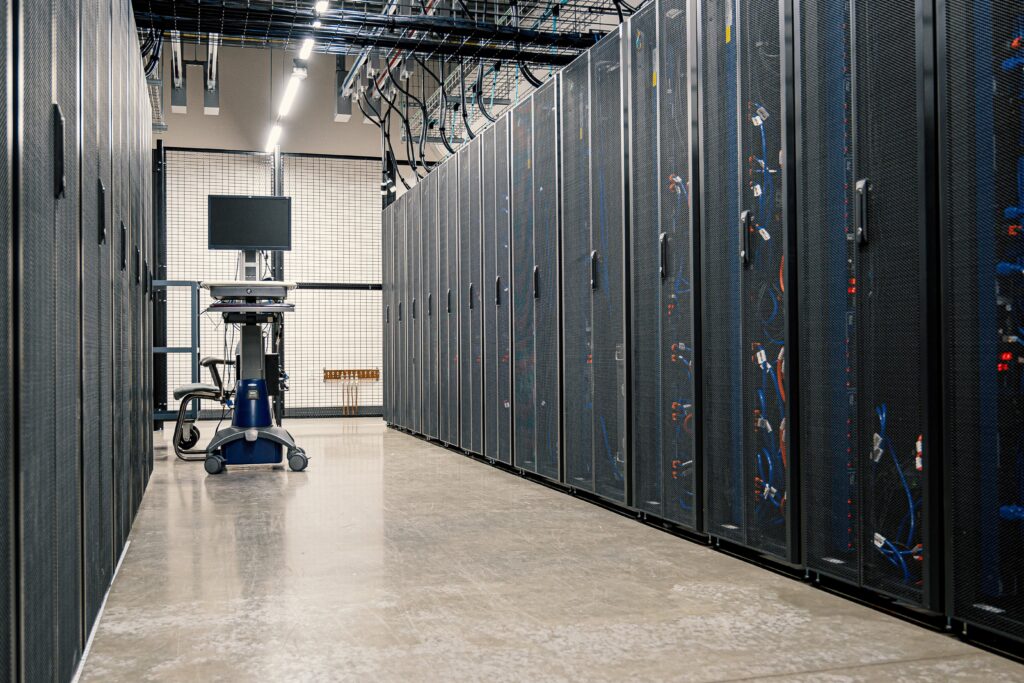Data centres are the beating heart of the digital economy. It enables technologies and services that impact virtually every aspect of modern life. However, they also have an outsized environmental footprint. As reliance on cloud services, video streaming, and emerging technologies like the IoT continues to surge, so too will energy consumption. So, building sustainable net zero data centres with minimal climate impact is one of the grand challenges. This is where automation and AI in building net zero data centres come into play.
These technologies offer immense potential to optimize data centre design. It also streamlines operations to achieve radical energy efficiency improvements. In this article, we will see the key areas which consume maximum energy. We will also get deeper into the role of automation and AI in building net-zero data centres. So, let’s get started.
Drivers of Energy Consumption in data centres
It’s important to first examine the key factors behind data centres’ extraordinary energy appetites. This is to understand what is the role of automation and AI in building net zero data centres. So, let’s take a look:
Server utilization
Servers often operate well below capacity but still draw significant power. Estimates indicate the average server operates at only 12% to 18% of its maximum capability. So, this leaves huge amounts of excess capacity where energy is still being consumed. It happens despite the minimal workload.
Overprovisioning
Data centres are designed to have the surplus capacity to comfortably handle projected peak demand. However, overprovisioned resources like servers, storage, and network bandwidth sit idle most of the time.
Cooling
A tremendous amount of energy goes toward cooling IT equipment and maintaining airflow. Furthermore, cooling can account for 30% to 55% of data centre energy consumption. Moreover, as overheated servers pose risks, cooling systems run continually at high levels.
Power conversion loss
The many power conversions and distribution systems within data centres incur efficiency losses. Furthermore, UPSs, power distribution units, transformers, and other components can amount to 10% to 20% overhead.
Older inefficient hardware
Legacy data centre infrastructure like first-generation UPS systems/servers have lower energy efficiency. Moreover, prolonged use adds to energy waste.
Let us move ahead and see the role of AI and automation in optimizing data centres.
How AI and automation make data centers greener and more sustainable?
AI and automation provide multifaceted solutions to curb energy waste within data centres. So, some of the most impactful applications include:
Workload forecasting and optimization
By analyzing historical demand patterns and trends, AI can build predictive models to forecast future data centre workloads. Furthermore, automation tools can then optimize the timing and location of workload execution to maximize efficiency. For instance, non-critical background work could be scheduled for nighttime when utility rates are lower.
Cooling optimization
AI algorithms can control data centre cooling resources like air handlers, chilled water pumps, and computer room air conditioning (CRAC) units based on predictive models of real-time IT equipment heat output. As a result, it allows cooling to closely match needs, eliminating wasteful overcooling.
Proactive predictive maintenance
Machine learning systems monitor all types of data centre infrastructure from server power supplies to battery backups to detect early signs of deteriorating performance or impending failure. Moreover, proactive fixes avoid wasted energy from malfunctioning components.
Rightsizing and capacity optimization
AI capacity planning algorithms analyze growth projections and variability to recommend optimized server, storage, and network provisioning. As a result, it ensures there is adequate but not excessive capacity. This is one of the greatest roles of automation and AI in building net zero data centres.
Power management
Automation allows servers, storage systems, and network switches to be intelligently powered on or off dynamically based on workload demands. So, this avoids idle power waste from inactive IT equipment.
Renewables integration
Automation helps seamlessly shift demanding data centre workloads to times when renewable energy availability is high. So, this better integrates carbon-free sources like solar and wind.
Digital twin simulations
Detailed data centre digital twins model all aspects of operations. Automation lets operators run what-if scenarios with different efficiency measures.
We now understand How AI and automation make data centers greener and more sustainable. Furthermore, AI and computational design go one step further and help in building the next gen infrastructure. Scroll further to know more!
AI and Computational Design for Next-Gen Infrastructure
In addition to optimizing operations in existing data centres, AI, automation, and high-performance computing enable innovations in net zero data centre infrastructure design:
Optimized cooling distribution
Computational fluid dynamics simulations help design optimal ductwork and vent layouts. Furthermore, it leads to uniform, efficient airflow and cooling. As a result, this minimizes wasteful cooling redundancy.
High-efficiency power infrastructure
AI optimization identifies the most efficient uninterruptible power supply (UPS), power distribution unit (PDU), and transformer configurations to minimize power conversion losses.

On-site renewable generation
Data centres can leverage large rooftop and exterior wall areas. It can be great for solar photovoltaic generation. Furthermore, automation controls dynamically balance solar power with grid electricity.
Cutting-edge server component efficiencies
Chip manufacturers utilize AI to design processors, power supplies, and components. These elements provide maximal capability per watt of power consumed. As a result, it creates major efficiency gains.
Reusable data centre heat
Automated systems capture and reuse waste heat from servers for facility heating. This converts a liability into an asset.
Ultra-efficient containment systems
AI optimizes cold and hot aisle containment designs. It helps to separate cooling exhausts and maximize air recirculation.
Smart connected lighting and HVAC
Occupancy sensors and machine learning optimize lighting, heating, and ventilation. As a result, it maintains comfort only when and where needed.
The Path to Net Zero Carbon
The role of automation and AI in building net zero data centres is tremendous. However, you can also use some additional measures to achieve net zero emissions. So, let’s take a look at a few of them:
- Procurement of renewable energy. This can be through initiatives like power purchase agreements. It contracts supplies directly from solar or wind farms.
- On-site renewable energy generation. It can take place via solar, wind, geothermal, and other means right at data centres.
- Investments in offsite renewable energy generation. It includes community solar or virtual power plants to offset non-renewable energy use.
- Utilization of carbon offsets from verified emissions reduction projects. It is to neutralize any remaining fossil fuel emissions.
The Net Zero Data Centre Summit happens in Berlin, Germany on February 1-2, 2024. This conference focuses on making data centres more sustainable. Data centre energy use is ballooning. So this timely event explores solutions to cut consumption and emissions. Attendees will learn about new technologies for high-efficiency, net-zero data centres. This includes AI automation and advanced cooling systems. The summit brings together leaders tackling data centre challenges.
They focus on renewable energy integration, carbon reduction strategies, and infrastructure innovations to reduce environmental impact. Professionals across the industry should attend this Berlin summit. It will help them shape a more sustainable data center future. By working with pioneering minds, attendees will gain insights to optimize their own operations. They will learn how to boost energy efficiency and achieve carbon neutrality. This summit empowers professionals to lead the way to eco-friendly, future-ready data centres. Register now!




